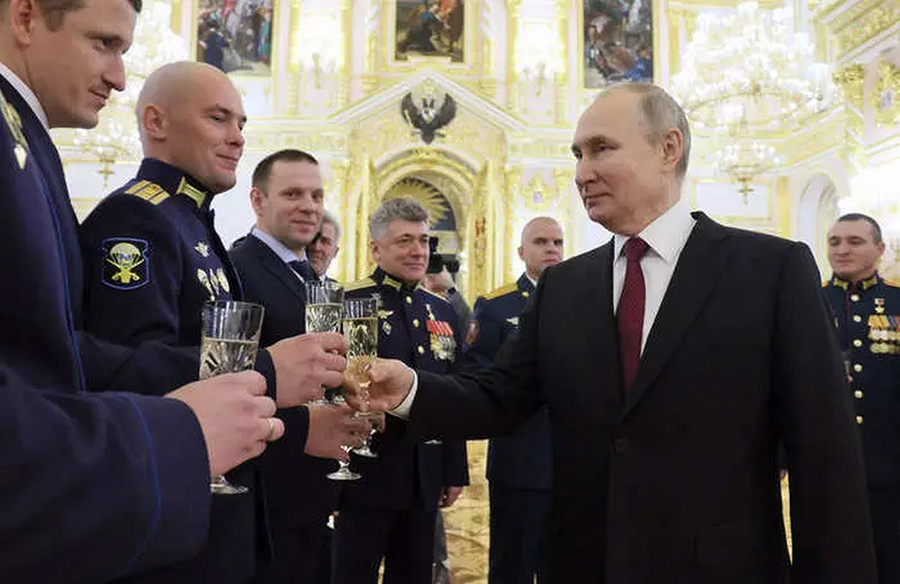
Russia’s economy, despite engaging in a prolonged conflict, appears to be thriving. While this may seem paradoxical, sustained GDP growth during wartime is not uncommon. However, questions linger regarding the accuracy and transparency of Russia’s economic data. Nevertheless, Moscow continues to finance its military endeavors for a third consecutive year. Let’s delve into how Russia has managed to uphold its economic stability amidst two years of warfare.
Waging War Beyond Borders
A crucial factor contributing to Russia’s economic resilience is the geographical scope of the conflict. With the war primarily unfolding on Ukrainian territory, the direct impact on Russian infrastructure and households remains relatively limited. This stark contrast in economic repercussions is evident when comparing the GDP performances of Russia and Ukraine. While Russia experienced a modest contraction in 2022 followed by growth in 2023, Ukraine faced a significant downturn in GDP during the same period.
Generating Demand for War Materials
Furthermore, the demand for wartime goods and services has provided a significant economic stimulus. Russia’s military operations necessitate a wide array of supplies, including weaponry, ammunition, and medical provisions. This heightened demand not only sustains domestic industries but also bolsters employment opportunities and wage levels, thereby fueling consumption and economic growth.
Self-Reliance and Diversification
Russia’s self-sufficiency in critical sectors such as energy and agriculture has shielded it from the full impact of external sanctions. Moreover, the country’s robust defense industry enables it to fulfill its military requirements independently. Strategic diversification of export markets and supply chains, alongside government subsidies and policies, further mitigate the adverse effects of sanctions on Russia’s economy.
Prudent Financial Management
Russia’s prudent fiscal policies and low external debt have contributed to maintaining macroeconomic stability. Despite significant allocations to defense spending, the country’s current account surplus, coupled with favorable commodity prices, has bolstered its financial resilience. Additionally, swift government interventions to stabilize markets and regulate monetary policy have helped navigate economic challenges effectively.
Economic Challenges Ahead
However, despite its apparent economic resilience, Russia faces a formidable economic “trilemma.” Balancing the demands of wartime expenditure, maintaining living standards, and ensuring macroeconomic stability presents a complex dilemma for Russian leadership. Escalating inflation and potential stagnation post-conflict underscore the need for careful economic management to avert future crises.
In conclusion, while Russia has demonstrated remarkable economic resilience amidst ongoing conflict, the sustainability of its wartime economy remains uncertain. The country’s ability to navigate the intricate interplay between military expenditure, socio-economic welfare, and macroeconomic stability will determine its long-term economic trajectory.










Leave a Reply